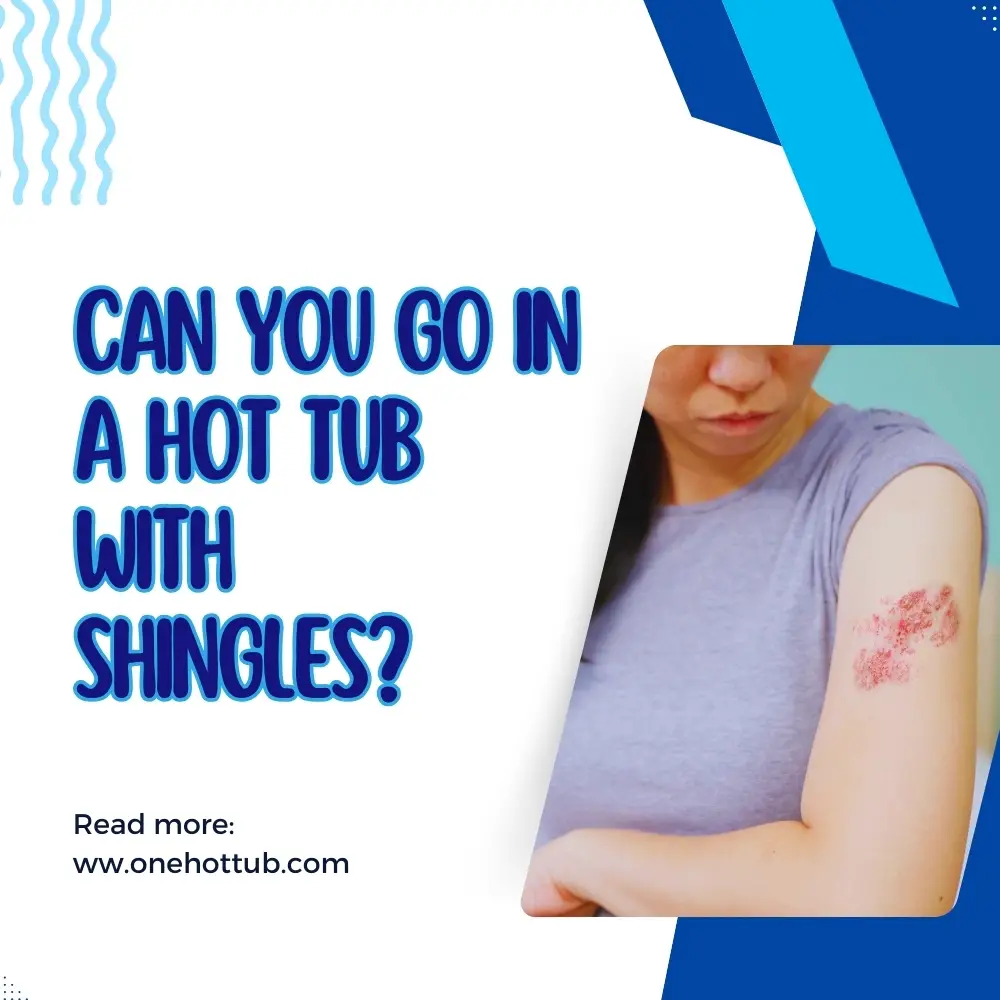Table of Contents - Can You Go In A Hot Tub With Shingles?
- Shingles and Swimming: What’s Really Going On?
- When Should You Stay Out of the Water? Your Shingles Swimming Timeline
- Speeding Up Recovery: Get Back in the Water Sooner!
- Back to the Pool! Your Post-Shingles Swimming Guide
- Must-Have Products for Your Post-Shingles Swimming Kit
- Your Burning Questions About Shingles and Swimming
- FAQs
This blog post may contain affiliate links. As an Amazon Associate I earn from qualifying purchases.
Can You Go In A Hot Tub With Shingles?

- Understanding the risks of swimming with shingles
- Identifying exactly when it’s safe to return to the water
- Practical tips for protecting yourself and others
- Expert solutions for a comfortable recovery
Shingles and Swimming: What’s Really Going On?
 Image Source: https://pexels.com/
Image Source: https://pexels.com/
The Sneaky Virus Behind Those Painful Blisters
- Getting older (most cases happen after turning 50)
- Having conditions that weaken immunity like cancer or HIV
- Taking medications that dial down your immune system
- Dealing with high stress levels (yes, stress matters!)
- Having had chickenpox in the past
Pool Problems: Why Swimming Gets Complicated
- Water washes away your bandages and protective coverings
- Moisture and friction might make your symptoms worse
- Open blisters can spread the virus more easily
- Chlorine doesn’t kill this stubborn virus (surprise!)
Water Worlds: Risk Levels in Different Swimming Spots
Chlorinated PoolsHot TubsOceans, Lakes & RiversPublic Showers
When Should You Stay Out of the Water? Your Shingles Swimming Timeline
 Image Source: https://pexels.com/can you swim with shingles
Image Source: https://pexels.com/can you swim with shingles
The Danger Zone: Active Blister Phase
Do’s and Don’ts During Active Shingles
| Do | Don’t |
|---|---|
| Cover all blisters with waterproof bandages if you absolutely must venture out | Take a dip in any public pool, lake, or ocean—no exceptions! |
| Wash those hands thoroughly after touching your rash | Share towels or pool noodles (no matter how much someone begs) |
| Keep your rash clean and desert-dry | Jump into contact sports (ouch!) |
| Stay home sweet home if those blisters can’t be completely covered | Use public showers or changing rooms (they’re virus-sharing zones) |
Chlorine Myth Busted: Why Pool Water Isn’t Your Friend
- Your virus can spread to others despite all that chlorine
- Water splashing loosens those carefully placed bandages
- Moisture might make your symptoms throw an even bigger tantrum
- Bandages might float away like tiny rafts, leaving blisters exposed
Hot Tubs and Shingles: A Painful Combo
- Hot water turns up the volume on pain signals to your already irritated nerves
- Heat and sweat can make your rash angrier than a wet cat
- The cozy quarters mean you’re practically sharing your virus with everyone else
Speeding Up Recovery: Get Back in the Water Sooner!
Antiviral Medications: Your First-Line Defense
Medication
- Acyclovir (Zovirax)
- Valacyclovir (Valtrex)
- Famciclovir (Famvir)
Dosage
- 800mg 5 times daily for 7-10 days
- 1g 3 times daily for 7 days
- Taken 3 times daily for 7 days
Home Remedies That Really Work (No Snake Oil Here!)
Do’s and Don’ts for Shingles Home Care
| Do | Don’t |
|---|---|
| Apply cool, wet compresses for 5-10 minutes several times daily | Use hot water (it sends blood rushing to blisters, making them worse) |
| Take cool oatmeal baths to calm the itch monster | Let dressings or plasters stick to the rash (ouch!) |
| Keep the rash clean and desert-dry | Wear scratchy fabrics that feel like sandpaper |
| Choose loose-fitting cotton or linen clothes | Slather on antibiotic ointment (keeps sores from drying properly) |
Comfort Boosters: Products That Actually Help
- Pain relievers: Reach for acetaminophen, ibuprofen, or naproxen to dial down the discomfort
- Calamine lotion: This pink miracle worker tames itchiness once your blisters have formed scabs
- Capsaicin cream: Contains chili pepper extract that tricks your pain receptors (only use after blisters have crusted!)
- Lidocaine patches or cream: Numbs the area faster than a dentist’s shot
- Petroleum jelly: Apply a whisper-thin layer after gentle washing with warm water
Back to the Pool! Your Post-Shingles Swimming Guide
Is Your Rash Ready for Pool Time?
all your blisters have completely dried and crusted over
- Every single blister should be fully scabbed—even one rogue uncovered blister can still spread the virus
- No new blisters popping up to crash your pool party
- All crusts dry and firmly stuck (no wobbly, loose scabs!)
Easing Back Into the Swim Zone
- Start with shorter swim sessions (think quality over quantity)
- Play skin detective—check closely for any irritation after swimming
- Choose off-peak pool hours when fewer people are splashing around
- Try outdoor pools if possible—many swimmers find them gentler on healing skin
Pool-Proofing Your Healing Skin
Chlorine and other pool chemicals
| Do | Don’t |
|---|---|
| Rinse off immediately after swimming | Let pool chemicals camp out on your skin |
| Slather on moisturizer after your swim | Air-dry (leads to skin drier than beach sand) |
| Use rich, thick creams before bedtime | Share towels or equipment (still a bad idea!) |
Must-Have Products for Your Post-Shingles Swimming Kit
 Image Source: https://pexels.com/
Image Source: https://pexels.com/
Waterproof Bandages: Your Swim Buddies
- Nexcare Waterproof Bandages – These water warriors stay put for up to 12 hours with a 360-degree seal that blocks both dirt and water from crashing your healing party
- Band-Aid Hydro Seal Bandages – Creates a double-duty seal that keeps germs out while letting your body’s natural healing process do its thing
- Transparent Film Dressings – These see-through, breathable waterproof shields let you check your healing progress without ripping off the bandage (ouch!)
Skin Barriers: Protection Before You Plunge
| Product | What Makes It Special |
|---|---|
| Cutimed PROTECT Spray | Creates a waterproof force field lasting up to 96 hours; lets skin breathe while keeping water out |
| Petroleum Jelly | Forms a simple but effective barrier over healing skin; just apply a thin layer before bandaging |
| Antibiotic Ointment | Helps kick infection to the curb; use sparingly before waterproof covering |
Skin Protection Do’s and Don’ts:
| Do | Don’t |
|---|---|
| Apply protective barrier before bandaging | Use cotton materials (they drink up water like a sponge!) |
| Check your dressings regularly during swim time | Stay in water with bandage edges waving hello |
| Use fresh bandages after each swim | Recycle bandages (ew!) after removal |
After the Splash: Tender Loving Care Products
- Clean the area gently with a fragrance-free cleanser (no scrubbing!)
- Pat skin dry completely—no rushing this step
- Treat yourself to these soothing goodies:
- Colloidal oatmeal bath products (pure bliss for irritated skin)
- Calamine lotion to tame the itch monster
- Medicated anti-itch creams with antihistamines for stubborn itchiness
Your Burning Questions About Shingles and Swimming
When can I jump back into the pool after shingles?Does pool chlorine zap the shingles virus?I absolutely must go somewhere with shingles—what should I do?Is it okay to use the hot tub while recovering?Could shingles seriously harm other swimmers?Will swimming help my shingles heal faster?How can I prevent shingles from crashing my swimming routine again?
FAQs
Q1. Is it safe to swim in a pool while I have shingles?Q2. What activities should I avoid when I have shingles?Q3. How should I care for my skin during shingles?Q4. When can I safely return to swimming after having shingles?Q5. Are there any ways to prevent shingles recurrence for swimmers?



